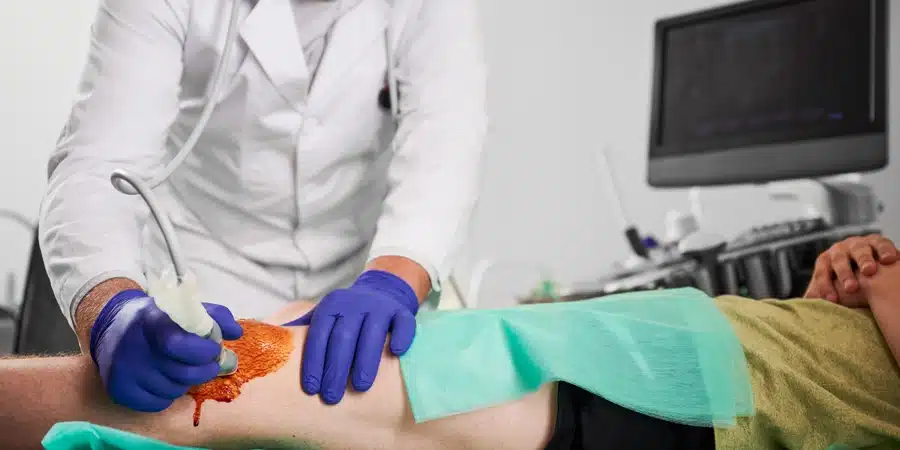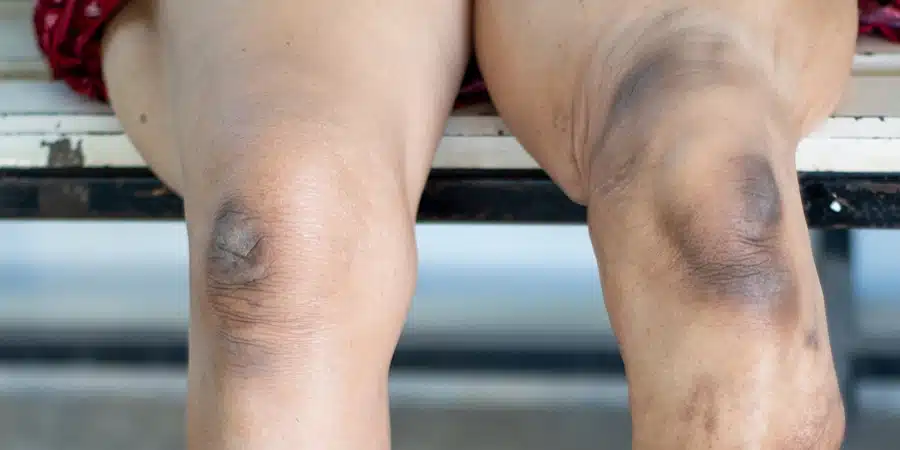Delay in Diagnosing and Treating Compartment Syndrome
Compartment Syndrome occurs when a part of the body – or compartment – produces more pressure than the compartment can handle. If not diagnosed and treated promptly, this condition can result in amputation or even death. Delay in diagnosis, which often causes permanent injury, can result in a medical malpractice claim. Compartment Syndrome is generally an orthopedic emergency, and because the consequences are often dire, there is a high risk for medical malpractice.

This syndrome is either caused by injury or by certain types of surgery. Compartment syndrome can occur in any area of the body with closed compartments. The lower leg is the most likely compartment to develop acute compartment syndrome, followed by the forearm, thigh, and arm. Abdominal, buttocks, hands and feet compartment syndrome is also quite common.
If you or someone you care about developed compartment syndrome that either was not treated or not treated promptly due to failed diagnosis, you may have a medical malpractice claim. You deserve to have experienced Compartment Syndrome Malpractice lawyers representing you. The Killino firm can help hold accountable those people responsible for such injury or death. Contact the Killino Firm at 877-875-2927 for expert assistance with your compartment syndrome malpractice case.
Compartment Syndrome Causes
According to the British Medical Journal (BMJ) causes of the syndrome are varied. Trauma is the most likely precipitating factor, with fracture of the extremity leading the greatest number of cases. Gunshot wound, followed by stab wound, motorcycle crash, and pedestrian struck by automobile are the next most likely causes leading to compartment syndrome.
Based on a study in the American Journal of Surgery, obstruction to venous drainage and venous hypertension are major factors in compartment syndrome in injuries to the lower extremities. Patients who suffered both arterial and venous injury had more than a 40 percent likelihood of developing compartment syndrome, whereas the likelihood was 5.9 percent for an open fracture and 2.2 percent for a closed fracture. Exertion and drug overdose leading to prolonged pressure on an extremity are also well-documented causes of compartment syndrome. https://www.ncbi.nlm.nih.gov/pubmed/2757141
As well, compartment syndrome can develop in a non-injured compartment from a large inflammation and capillary leak. Although rare, streptococcal infections and tissue swelling can also trigger compartment syndrome.

Compartment Syndrome Symptoms and Signs
Unfortunately, the threat is often made greater because doctors or nurses overlook or ignore obvious signs and symptoms of compartment syndrome. The classic symptoms of compartment syndrome can be deceiving as they occur late.
Pain that is out of proportion to the injury is a main indicator. Pain happens because increased pressure within the muscle compartment causes the loss of blood supply and nerve inflammation.
If left untreated, compartment syndrome can lead to permanent muscle and nerve damage in the affected area, which may require amputation and can even cause death. Other outcomes include the following:
- Chronic pain in the affected area
- Loss of feeling in the affected area
- Kidney damage or failure
- Rhabdomyolysis –muscle breakdown
- Sepsis /SIRS
Compartment Syndrome Diagnosis Delay or Missed Diagnosis
Many types of illnesses can be effectively treated if they are diagnosed early. A failure to diagnose, however, can lead to lifelong injuries and death. When our doctors fail to determine a medical problem and treat it, patients or their families may need to take legal action to achieve justice.
To date, there are no reliable clinical guidelines established to diagnose compartment syndrome. It can be difficult to diagnose due to similarity between its side effects and side effects of other conditions Because pain is a main sign of this condition, continuous pain relief makes diagnosis difficult as analgesia masks pain and finding the origin of the pain can be problematic if this condition has occurred as the result of a fracture. As well, large dressings or casts in the area can impede a physical examination (conversely, if bandages or casts are applied too tightly they can actually cause compartment syndrome).
Compartment syndrome that occurs after an injury is called acute compartment syndrome (ACS), but it can also occur from overuse of a muscle, called chronic exertional compartment syndrome, which typically affects athletes.
Acute Compartment Syndrome
ACS is a condition that requires immediate treatment to save the muscles and the limb.
The classic signs of acute compartment syndrome include the 6 ‘P’s’:
- Pain,
- Paresthesia: (typically tingling or pricking, as in “pins and needles”)
- Poikilothermia: (inability to regulate core temperature, sweating or “the chills”
- Pallor,
- Paralysis
- Pulselessness
ACS most commonly occurs in the leg and forearm, but it can also develop in the foot, thigh, or buttocks. Long bone fractures cause 75 percent of ACS cases, and the most common of these are in the tibia bone.
ACS can occur from strong and direct trauma to a compartment area, such as burns, excessively tight bandages, penetrating trauma, and vascular or arterial injuries. When there is no fracture involved, there is a greater risk for delayed diagnosis and treatment. ACS can also occur without any type of trauma. For instance, it can develop when an individual has a bleeding disorder, injects recreational drugs, or has a limb compressed for a prolonged period of time.
In all of these causes, a lack of oxygen reaching the tissues of the compartment results in ACS.
ACS Treatment
According to the BMJ, lower extremity compartment syndrome is a devastating complication if not rapidly diagnosed and properly managed. Any concern for compartment syndrome should prompt a compartment pressure check. Most common checks are pressure measurements taken while the patient is rest, and then after the patient completes a short walk or movement to the affected area. The change in pressure is compared in order to diagnose. Typically, pressure difference from rest and activity is minimal but in patients who have ACS, the difference is dramatic. https://tsaco.bmj.com/content/2/1/e000094
ACS is treated with a surgery called a fasciotomy where the pressure in the compartment is relieved by cutting open the muscle. If the fasciotomy is delayed, muscle tissue may die and the patient may require amputation of the limb.
If you are the victim of a delayed or misdiagnosis of acute compartment syndrome, the Killino law firm can help you get compensation for your pain, suffering, medical bills, missed time at work, and lost future income.
Chronic Compartment Syndrome
Chronic compartment syndrome is easier to diagnose because it develops over a longer period of time. Chronic compartment syndrome commonly occurs in athletes or those who overuse a particular muscle or limb. Athletes who use steroids are somewhat more likely to develop compartment syndrome.
Compartment Syndrome Medical Malpractice
Medical malpractice compartment syndrome claims are typically acute cases, as they are the riskiest and most dangerous.
If you feel that health care providers are minimizing your complaints, it is important that you and your family become pro-active, so you or your loved one receive the treatment and compassion you deserve.
Compartment syndrome is truly a serious condition. If you or someone you care about suffered an injury that led to a delayed diagnosis of compartment syndrome, the Killino law firm can help. Our compartment syndrome malpractice attorneys are dedicated to investigating your case and getting financial compensation for patients that have suffered needlessly due to the negligence of their medical providers.







